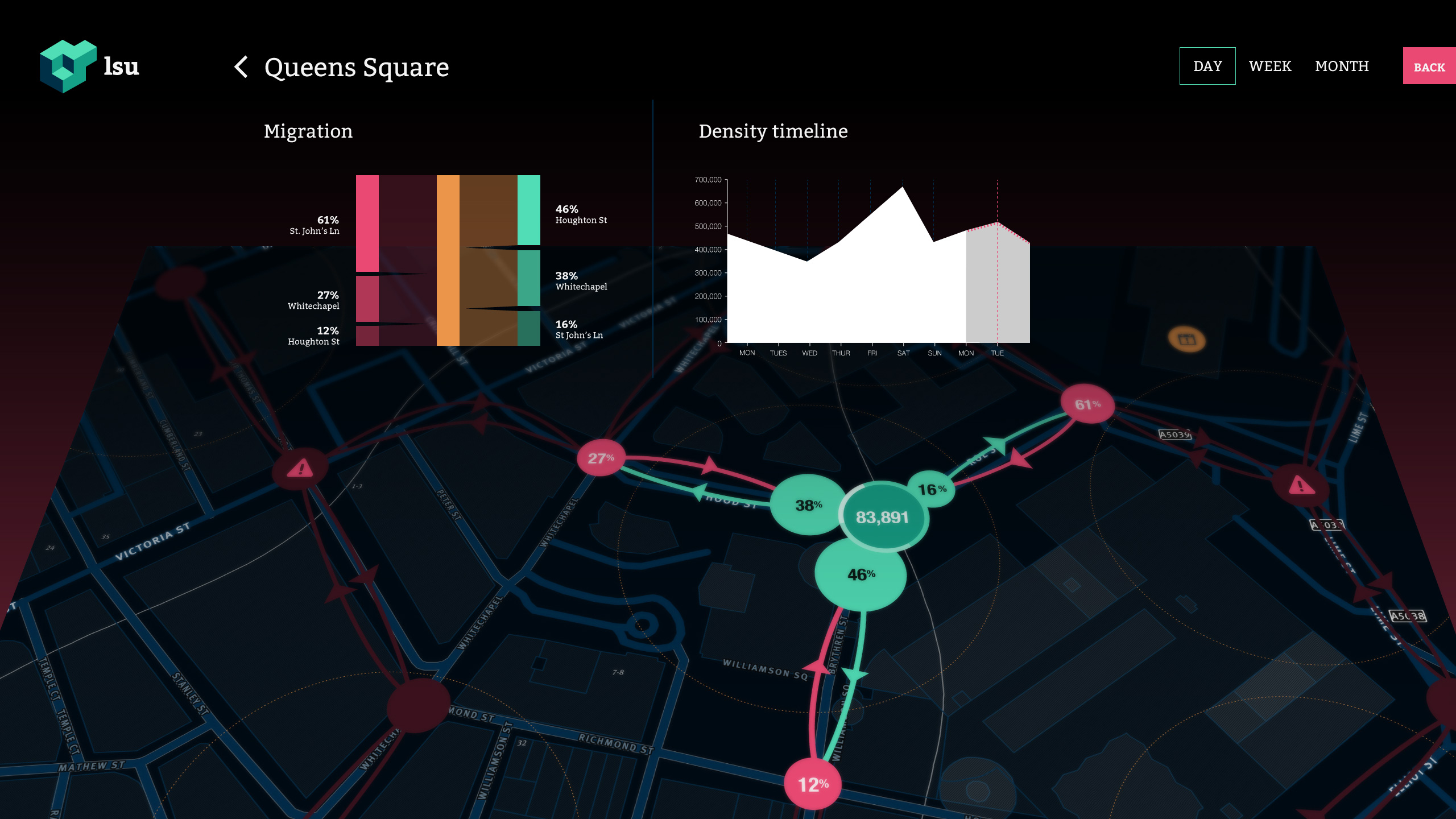iSensing
Using sensor technology and the Internet of Things to understand how citizens move through cities.
The Challenge
Throughout the world, people are migrating to urban centres. By 2030, 60% of the world’s population will live in a city. 1
Understanding how citizens move through cities is important to public and private sector organisations to deliver existing services and deliver new solutions. Prior to our solution, means of visualising real-time movement data in a reliable, affordable and in-depth manner were limited.
Listening
We realised, that as cities become more populated, we see an innovation drive to resolve the social, economic and environmental issues.
Red Ninja believes that decision makers should put citizens at the heart of innovation. It is the core of all our operations; after all, “there is nothing smart about delivering services that people do not want, or in the wrong priority order.”
This is especially the case for Smart Cities - our latest venture.
There is nothing smart about delivering services that people do not want, or in the wrong priority order.

Thinking
Red Ninja became involved in a transnational R&D project named LSU, which sought to help realise a solution for Merseytravel: to measure citizen movement between the central bus station in Liverpool and the new, proposed bus route within the Baltic Triangle. The customer wanted to validate their investment in the new bus route, but didn’t have the tools to measure a large movement flow.
Red Ninja used our planning and design expertise to create an IoT sensor network that captures citizen numbers, durations, movement analytics and returning visits in real time.
Graphs are like jokes: if you have to explain them, you have failed.

Being able to collect and visualise data in this way has so much power to make cities work better for their citizens.
Doing
Red Ninja created a much larger sensor network than anticipated. This network covered Liverpool City Centre and Birkenhead, and was used to forecast the demand for road space using real-time and historical data. Since our first project, we have developed a product that has been rolled out in cities and airports across the UK and beyond, such as Spain, Mexico and Brazil.
To build upon the positive results of our first project, Red Ninja created a commercialisation plan. This plan had four aims. Firstly, to evaluate the value that Red Ninja added to the project, which was planning, design, health and safety, installation and data visualisation. Secondly, to design a set of unique dashboards for public and private sector organisations. Thirdly, to create a set of planning and design principles that could be scaled to other projects and other cities across the world. Finally, a commercial model that provides customers with all of the financial benefits of a shared IoT network, making access to data instant and affordable.
